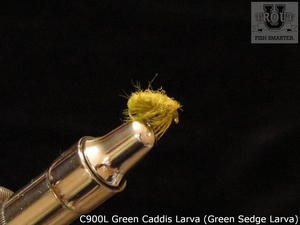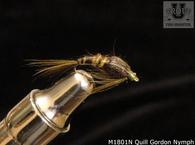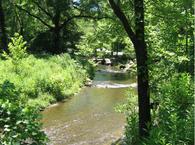
In the fall of the year, the heavy rains will produce some rough waters and you may want to consider switching to a wet fly. What is a wet fly? A wet fly is an imitation of a nymph or larva that has become dislodged from the bottom and is drifting downstream. The trout will be aggressively feeding on them as they drift downstream.
When fishing a dry fly, you usually will see the trout as well as the currents and seams, so you will know where to place the fly. However, when trout are not rising to the surface, you need to determine where to place the wet fly in order to imitate the natural food drifting downstream. You need to allow the fly to drift in the seams or near the banks where the natural food would most likely be drifting. The good news is that the trout will usually attack the wet flies hard so there will be no mistake in detecting the strike.
The method to fish the wet flies is really quite simple and similar to how you might fish an artificial lure if you were not fly fishing. You will be using drag to your advantage and letting the drag work for you. Present the fly down and across the stream allowing the fly to swing around directly below you in an arc. Depending on your particular situation, you may or may not want to mend the line. As the fly reaches a point directly downstream, allow the fly to rise to the surface and drift momentarily in the current.
As you cast downstream the trout will be facing you so you cannot get as near to them as you would be able to do when casting upstream. You should cast 30 or more feet and at that distance you may occasionally have problems detecting a strike and setting the hook. As the fly hits the water, it will be necessary to control any slack line to aid in the strike detection.
The trout will usually rise to the surface and take the fly the way they would take it if it were a dry fly. In shallow riffles and runs, you may decide to fish the fly without additional weight and just allowing it to penetrate the water only a few inches. In deeper runs, weight may be necessary to get the fly near the bottom. In this case, as the rod tip stops, the fly will rise back to the surface due to the water drag.
Another method of getting the weighted fly down where it is needed is to cast up and across at a 45 degree angle, allowing the fly to swing all the way around to the down and across position which will provide more time to get the fly down. Often times, the trout will take the fly during the swing so be aware as it will not be as noticeable.
Use an eight or nine foot fly rod that is of four or five weight with a flex that will allow you to cast well and rig it with a floating line. Sinking tip or sinking lines will not be necessary as the fly will penetrate the water up to five feet easily by simply adding some weight and mending the line.
Resist the temptation to use soft hackle generic flies or standard “wet flies” as they may not imitate the most available insect in the stream; rather, use the pattern that will imitate the real insect. Use mayfly nymphs, stonefly nymphs, or caddisfly larva depending on which ones are more available and more accessible to the trout. We strongly recommend the “Perfect Fly” line of flies that more closely imitates the real insect. On a day when a specific hatch is underway, use the wet flies in the mornings or whenever the actual hatch is not occurring.





